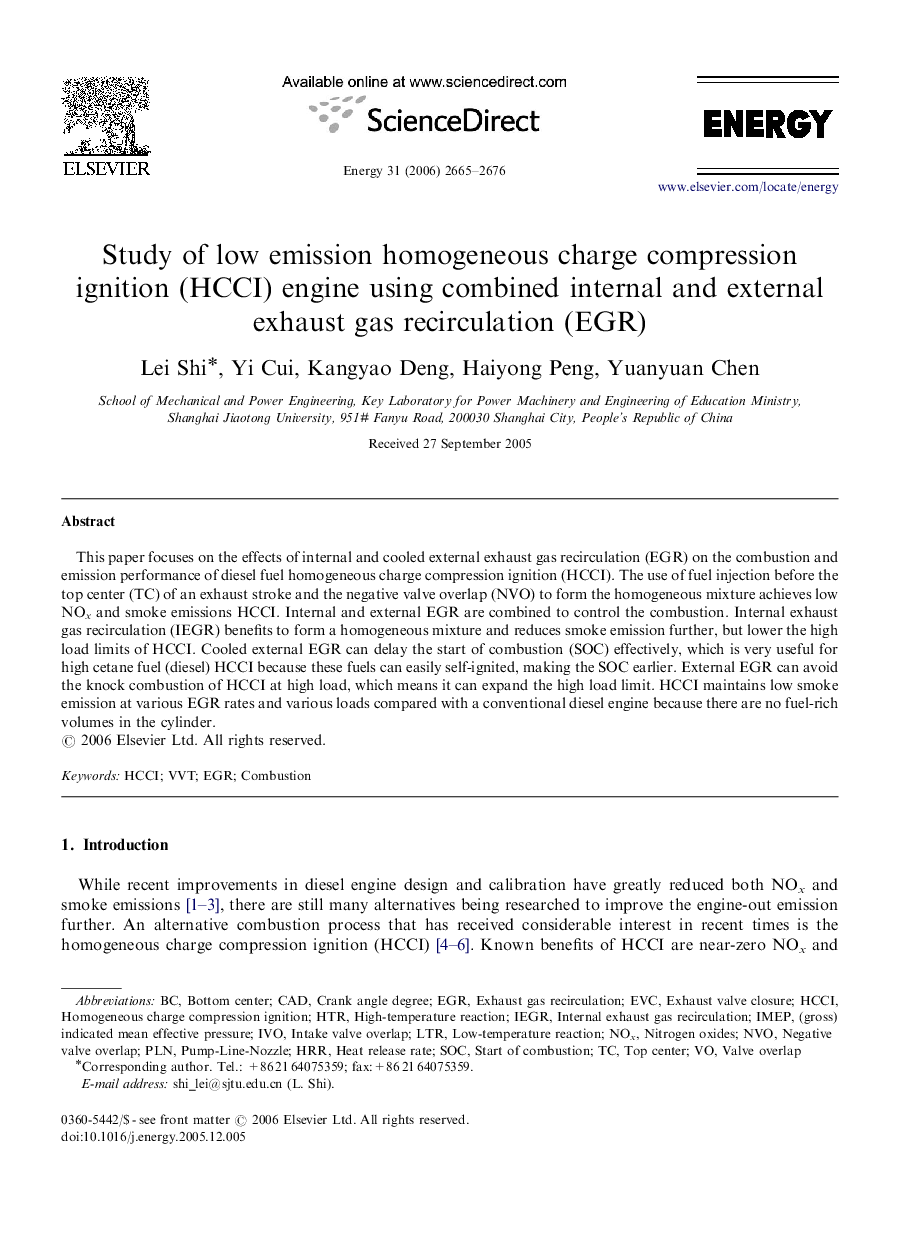| Article ID | Journal | Published Year | Pages | File Type |
|---|---|---|---|---|
| 1736310 | Energy | 2006 | 12 Pages |
This paper focuses on the effects of internal and cooled external exhaust gas recirculation (EGR) on the combustion and emission performance of diesel fuel homogeneous charge compression ignition (HCCI). The use of fuel injection before the top center (TC) of an exhaust stroke and the negative valve overlap (NVO) to form the homogeneous mixture achieves low NOx and smoke emissions HCCI. Internal and external EGR are combined to control the combustion. Internal exhaust gas recirculation (IEGR) benefits to form a homogeneous mixture and reduces smoke emission further, but lower the high load limits of HCCI. Cooled external EGR can delay the start of combustion (SOC) effectively, which is very useful for high cetane fuel (diesel) HCCI because these fuels can easily self-ignited, making the SOC earlier. External EGR can avoid the knock combustion of HCCI at high load, which means it can expand the high load limit. HCCI maintains low smoke emission at various EGR rates and various loads compared with a conventional diesel engine because there are no fuel-rich volumes in the cylinder.
